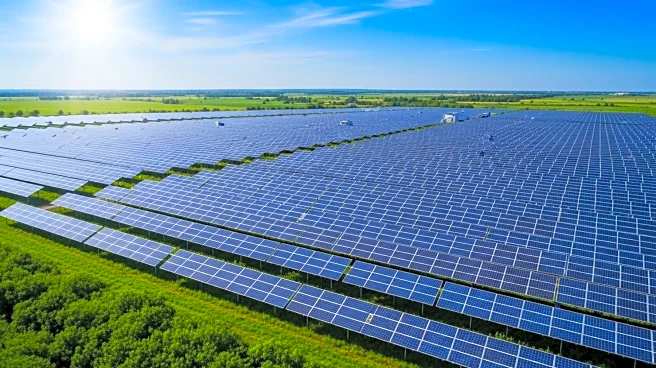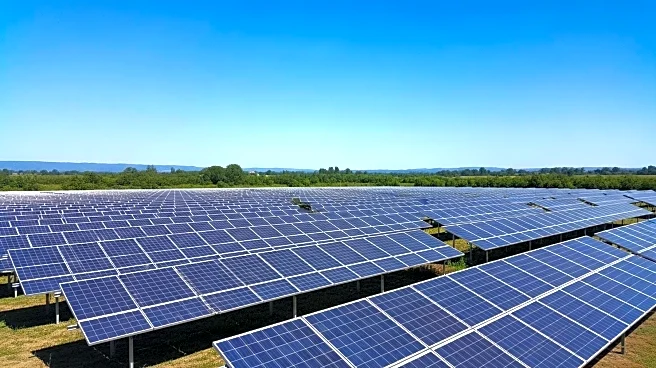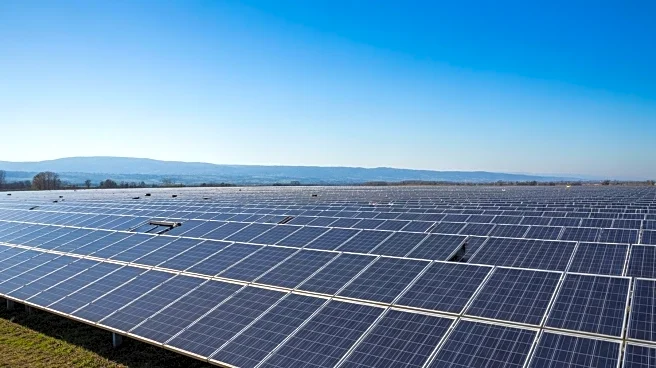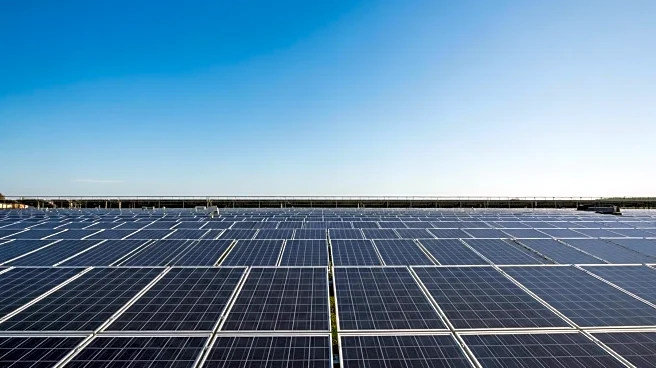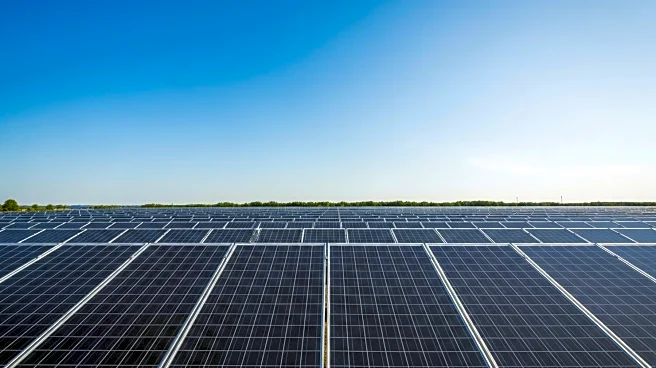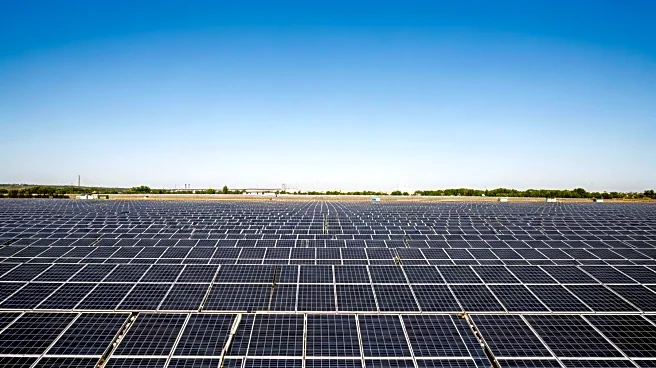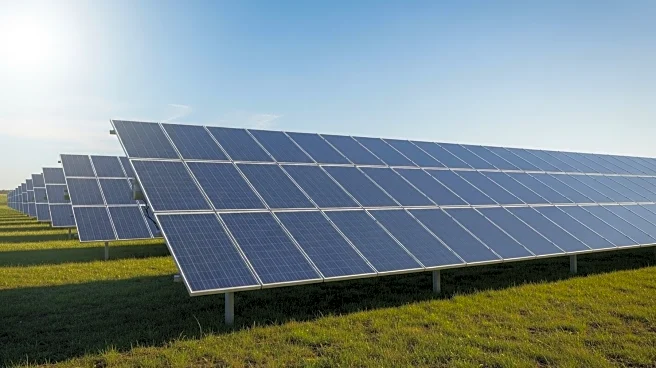What is the story about?
What's Happening?
Toyota Motor Corp. has inaugurated a 30-acre solar field at its Kentucky manufacturing plant, marking a significant step towards achieving net-zero emissions by 2030. The Georgetown facility, Toyota's largest vehicle manufacturing plant in North America, will utilize the solar installation to offset 10% of its energy needs, equivalent to powering approximately 1,400 homes annually. This initiative is part of Toyota's broader strategy to integrate renewable energy into its operations, reducing reliance on fossil fuels and enhancing energy efficiency. The solar field, which generates 8.79 megawatts of clean energy, is strategically located on-site to minimize transmission losses and maximize operational efficiency.
Why It's Important?
The launch of the solar field at Toyota's Kentucky plant is a pivotal move in the automotive industry's shift towards sustainability. As regulatory pressures and investor demands for decarbonization increase, Toyota's investment in renewable energy reflects a commitment to environmental responsibility. This project not only reduces operational costs but also positions Toyota as a leader in sustainable manufacturing practices. By adopting on-site renewable energy solutions, Toyota sets a precedent for other automakers, potentially influencing industry standards and encouraging competitors to pursue similar initiatives. The solar field also contributes to Toyota's goal of procuring 100% renewable electricity by 2035, aligning with federal incentives for clean energy.
What's Next?
Toyota's solar initiative in Kentucky is expected to have a ripple effect across the automotive supply chain, encouraging suppliers and competitors to adopt renewable energy solutions. The company plans to continue expanding its renewable energy portfolio, with similar projects underway, such as a 30-megawatt solar installation near its Alabama engine plant. These efforts are part of Toyota's phased approach to achieving carbon neutrality, which includes leveraging power purchase agreements to claim renewable energy credits. As global demand for solar energy surges, Toyota's strategic investments will be crucial in bridging the gap to net-zero emissions, although challenges such as permitting delays and supply chain bottlenecks remain.
Beyond the Headlines
Toyota's solar field initiative highlights the potential for transforming former industrial sites into productive assets for renewable energy generation. By utilizing brownfield sites for solar installations, Toyota demonstrates innovative approaches to sustainability that could be replicated across various industries. This strategy not only contributes to environmental goals but also revitalizes areas previously impacted by industrial activities, offering economic and social benefits to local communities. As the U.S. aims for 100% clean electricity by 2035, Toyota's efforts underscore the importance of collaboration between corporations, utilities, and policymakers in achieving ambitious climate targets.
AI Generated Content
Do you find this article useful?
